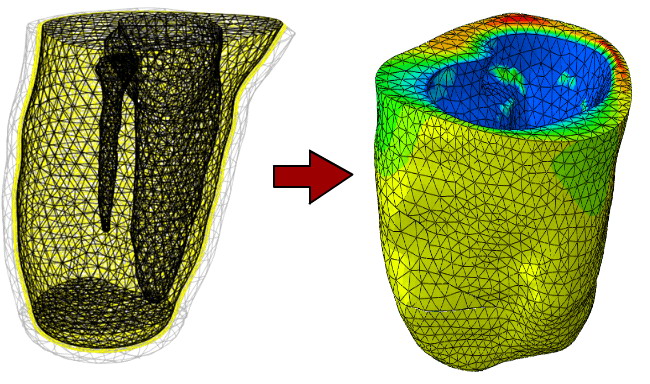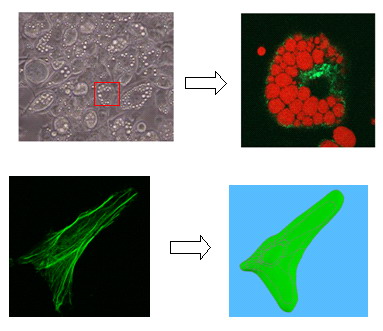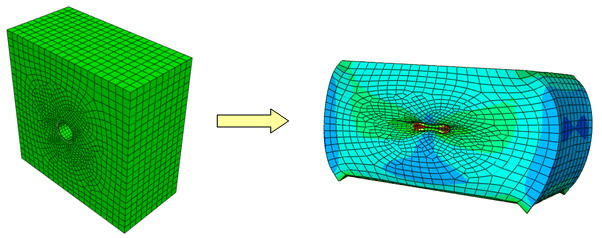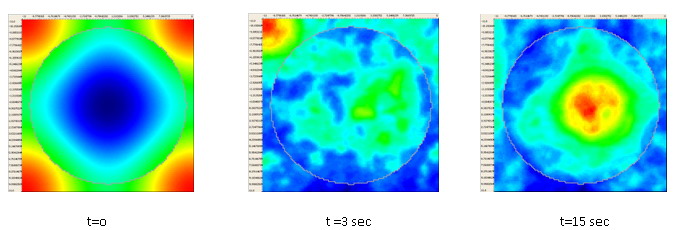 |
 |
 |
- Patient-specific evaluation of the internal mechanical state in the residuum of transtibial amputation prosthetic-users
- Cellular-scale models of deep tissue injury
- Characterization of risk factors for a deep tissue injury using computational modeling
- Structural behavior and viability of adipocytes subjected to compressive deformations
- Development of a well-controlled animal model of stress fractures
- Collapse of muscle capillaries due to compression and shear loads
- Transport of metabolites in and around muscle and fat cells subjected to an ischemic environment
- Measurement of frictional properties between bone and muscle tissues
Patient-specific evaluation of the internal mechanical state in the residuum of transtibial amputation prosthetic-users |
Sigal Portnoy, Ph.D. student
Email: msbm@eng.tau.ac.il
The residual limb of transtibial amputation prosthetic-users is threatened daily by pressure ulcers and deep tissue injury (DTI) caused mainly by sustained mechanical strains and stresses. In this study we employ patient-specific MRI-based non-linear three-dimensional finite element models to quantify deep tissue strains in residual limbs of prosthetic-users during static load-bearing. Additionally, internal dynamic stresses are evaluated in real-time during prosthetic gait on different terrains using a portable internal stress monitor.

Cellular-scale models of deep tissue injury |
Noa Slomka, Ph.D. student
Email: slomkano@post.tau.ac.il
The specific processes which lead to formation of a deep tissue injury are currently unknown. Recent studies indicated the involvement of deformation-related events at the cellular scale. In this project, we study the behavior of skeletal muscle cells subjected to large compressive deformations, using experimental and computational cellular mechanics approaches. We ultimately aim at characterizing the mechanisms underlying the onset and progression of this injury.
Characterization of risk factors for a deep tissue injury using computational modeling |
Ran Sofer, M.Sc. student
Email: ransophe@post.tau.ac.il
Abnormal body weight (both underweight and overweight) is indicated as a risk factor for deep tissue injury. Quantification of internal tissue loads, e.g. deformations and stresses, in seated underweighted or obese subjects, may help to determine body mass indices which put a patient at risk for deep tissue injury.

Structural behavior and viability of adipocytes subjected to compressive deformations |
Shira Tzadikario, M.Sc. student
Email: tzadiksh@post.tau.ac.il
Damage to fat tissue is present in practically all serious pressure ulcers and deep tissue injuries, but little is known on the biomechanics of fat tissue, particularly at the cell level. In this project, we study the tolerance of individual fat cells to large compressive deformations, using experimental and computational cellular mechanics approaches.

Development of a well-controlled animal model of stress fractures |
Michal Stern, M.Sc. student
Email: sternpe@post.tau.ac.il
In this project, animal studies in a rat model of stress fractures are integrated with a three-dimensional anatomically-realistic finite element model of a rat limb (including bone and soft tissues), to determine mechanical loading levels (e.g. amplitude and frequency of strains) that induce stress fractures.

Collapse of muscle capillaries due to compression and shear loads |
Malka Shilo, M.Sc. student
Email: malkamar@post.tau.ac.il
Deep tissue injury may occur when skeletal muscle tissue is subjected to sustained mechanical deformations, caused by bony prominences at load-bearing sites such as the ischial tuberosities or sacrum. The localized tissue deformations may cause obstruction or collapse of capillaries, which thereby induce ischemia at the highly deformed tissue sites. In this study we use computational (finite element) modeling to determine the contributions of compression and shear deformations in skeletal muscle tissue to capillary collapse, and in particular, the interaction between compression and shear in obstruction and occlusion of capillaries.

Transport of metabolites in and around muscle and fat cells subjected to an ischemic environment |
Efrat Leopold, M.Sc. student
Email: efratleo@post.tau.ac.il
This project utilizes the "Virtual Cell" software to study the transport of metabolites in and around muscle and fat cells subjected to an ischemic environment. "Virtual cell" is a simulation software that implements a computational cell biology approach which integrates biological and mathematical frameworks. The program converts biological model events into a mathematical code needed to perform and analyze simulations.

Diffusion of Calcium from the extracellular matrix into the cytosol of a simplified (round-shaped) cell model
Measurement of frictional properties between bone and muscle tissues |
Sharon Shacham, Undergraduate student
Email: shachamit@gmail.com
In this project we have designed an experimental system (see image) to measure the static friction coefficients between bone and soft tissues, as this is relevant in modeling (particularly finite element modeling) of pressure ulcers and deep tissue injury







